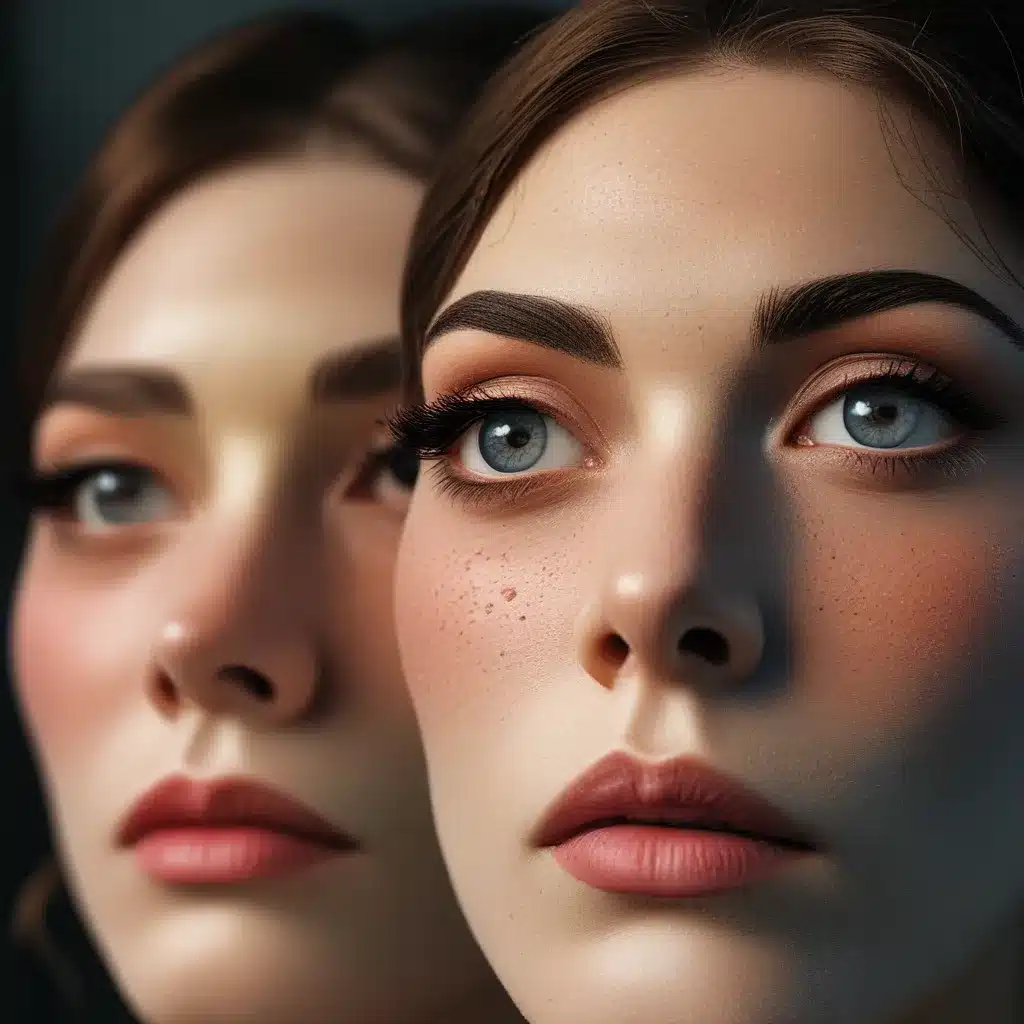
The Makeup Artistry Awakening
It was a fateful Halloween event in Los Angeles, back in the 80s, that sparked my lifelong passion for theatrical makeup. As a young aspiring artist, I vividly remember poring over the pages of Richard Corson’s “Stage Makeup” textbook, trying to decipher the secrets of transforming human faces into captivating animal masks.
With a sponge and a few cake makeup colors, I set out to bring the illustrations to life, carefully tracing the lines and shading that would reshape the features before me. The moment I saw the human face morph into the striking visage of a fierce tiger, I knew I had stumbled upon a magical power – the power of makeup to transport performers and audiences alike into realms of pure imagination.
From that day on, I’ve been on a captivating journey, exploring the endless possibilities of makeup artistry and its profound impact on the world of musical theater. As an educator and performer, I’ve had the privilege of guiding countless individuals through the transformative process, unlocking their inner animal, monster, or mythical being.
The Art of the Mask
In the realm of musical theater, makeup plays a pivotal role in shaping the character, evoking emotions, and elevating the overall performance. It’s not simply about applying colors and lines; it’s about crafting intricate masks that seamlessly blend with the actor’s features, creating a seamless illusion.
Consider the iconic Phantom of the Opera, whose haunting visage is synonymous with the show. The carefully sculpted mask, with its striking features and enigmatic allure, is an integral part of the character’s identity. Without it, the Phantom would lose his mystique, his power to captivate and terrify the audience.
The Musical Theater Center has long recognized the importance of makeup in shaping performance, and we’ve made it our mission to empower artists with the skills and techniques to bring their characters to life.
Awakening the Senses
Effective theatrical makeup goes beyond the mere application of colors and lines. It’s about engaging the senses, evoking emotions, and creating an immersive experience for the audience.
Take, for example, the transformation of a character into a fearsome beast. The intricate details of the makeup – the shading that elongates the nose, the bold stripes that accentuate the brow, the strategic placement of whiskers – work in harmony to trigger a visceral response. The audience is no longer just watching a performance; they’re transported into the very world of the character, their senses heightened, their emotions stirred.
As I’ve learned from my own experiences, the key to this transformative power lies in the careful balance of color, line, and texture. By strategically applying layers of makeup, a skilled artist can reshape the human features, creating the illusion of an entirely new being.
Unlocking the Performer’s Potential
But the impact of theatrical makeup extends far beyond the audience’s experience. It’s also a powerful tool for unlocking the performer’s full potential.
When an actor steps into the shoes of a character, they’re not just reciting lines and following choreography; they’re tapping into their own emotional and physical reserves, channeling the essence of the role. And the makeup they wear can be the catalyst that ignites this transformation.
As an educator, I’ve witnessed this process firsthand. I’ve seen shy, introverted students suddenly come alive, their eyes sparkling with the ferocity of a lion or the mischief of a pixie, as they embrace the character through the power of makeup.
It’s a truly remarkable sight, watching an individual’s confidence and stage presence blossom under the transformative influence of theatrical makeup. Suddenly, they’re no longer just playing a role; they’re embodying it, every fiber of their being infused with the essence of the character.
Tradition and Innovation
The art of theatrical makeup is deeply rooted in tradition, with techniques and approaches that have been passed down through generations of performers and makeup artists. From the elaborate face paint of ancient Greek theater to the iconic looks of Broadway’s golden age, the evolution of theatrical makeup has been a testament to the enduring power of performance.
But as the world of musical theater continues to evolve, so too does the art of makeup. Today, we’re witnessing a surge of innovation, with makeup artists pushing the boundaries of what’s possible, blending cutting-edge technology with time-honored techniques.
From the use of high-definition prosthetics that seamlessly integrate with the actor’s features to the incorporation of dynamic lighting and projection mapping, the possibilities for transformative makeup are endless.
At the Musical Theater Center, we’re proud to be at the forefront of this evolution, offering cutting-edge training and resources to aspiring and established makeup artists alike. Our curriculum blends the rich traditions of the past with the innovative techniques of the present, empowering our students to push the boundaries of what’s possible on the stage.
The Power of Transformation
As I reflect on my own journey in the world of theatrical makeup, I’m struck by the profound impact it has had on my life and the lives of countless others. It’s not just about the artistry, the technical skills, or the hours spent perfecting a look. It’s about the transformative power that makeup wields – the ability to transport audiences and unlock the inner potential of performers.
Whether it’s the haunting allure of the Phantom, the fierce grace of a tiger, or the mischievous charm of a pixie, theatrical makeup has the power to shape and elevate the art of performance. And as we continue to explore the endless possibilities of this captivating craft, I’m confident that the future of musical theater will be nothing short of magical.

